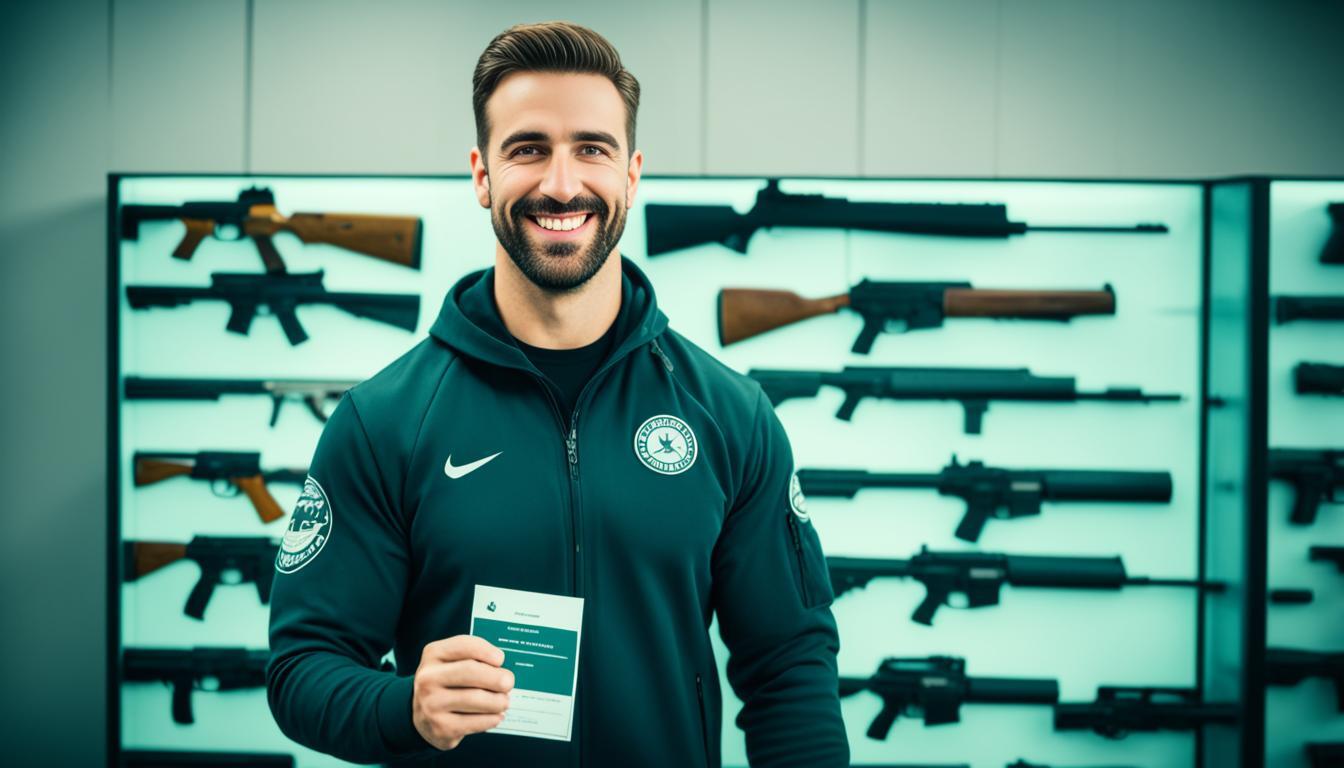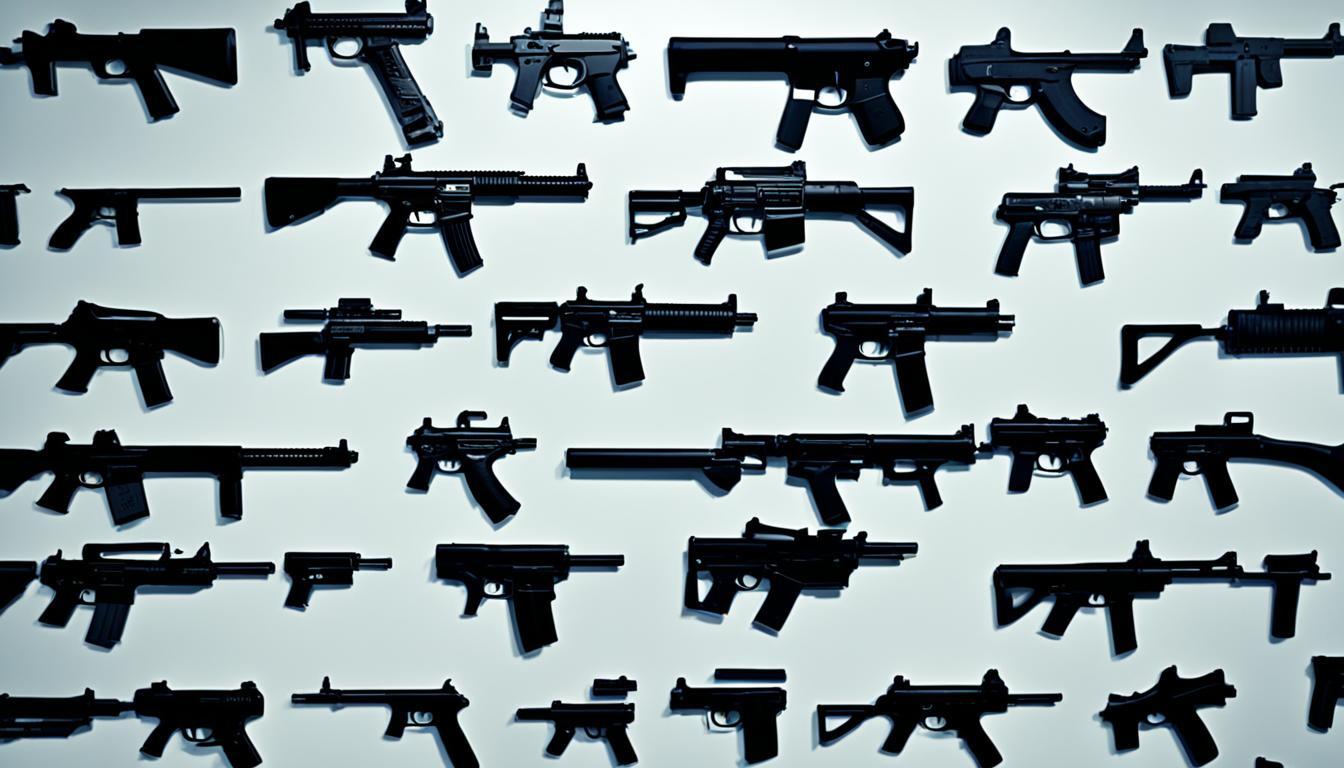Get Your Possession and Acquisition License Now!
If you’re in Canada and wish to legally possess and use firearms, it is crucial to obtain a Possession and Acquisition License (PAL). Even if you are not the owner of the firearm but merely in possession, a PAL is required. Applying for a PAL is a straightforward process, but it’s important to act promptly to avoid any penalties. Let’s explore what a PAL is, how to apply for it, and some tips to ensure a smooth application process.
Key Takeaways:
- Obtaining a Possession and Acquisition License (PAL) is necessary to legally possess and use firearms in Canada.
- A PAL must be renewed every five years and is required even if you are not the owner of the firearm.
- To apply for a PAL, you need to pass the Canadian Firearms Safety Course (CFSC) and complete the PAL application form.
- The processing time for a PAL application can vary, so it’s essential to apply early and follow all instructions accurately.
- You can check the status of your PAL application by contacting the Canadian Firearms Program (CFP) through their toll-free number or online service.
What is a PAL?
A Possession and Acquisition License (PAL) is a firearms license that allows individuals in Canada to possess and use firearms. It is the only license available to new applicants and must be renewed every five years. The PAL is required for registering restricted and prohibited firearms. To obtain a PAL, applicants must pass the Canadian Firearms Safety Course (CFSC).

Key Points
- PAL is the primary firearms license in Canada
- Must be renewed every five years
- Required for registering restricted and prohibited firearms
- Obtained by passing the Canadian Firearms Safety Course (CFSC)
Benefits of a PAL
Having a Possession and Acquisition License (PAL) provides several benefits:
- Legally possess and use firearms
- Access to a wide range of firearms for various purposes such as hunting and sport shooting
- Ability to purchase ammunition
- Opportunity to participate in shooting competitions and events
Responsibilities of PAL Holders
While holding a PAL comes with privileges, it also carries certain responsibilities:
- Complying with all federal and provincial firearms laws and regulations
- Safely storing firearms and ammunition
- Using firearms responsibly and only in authorized locations
- Maintaining up-to-date license information
By obtaining a PAL, individuals can exercise their rights as firearms owners while fulfilling their responsibilities to the community.
| License Type | Eligible | Rights and Privileges |
|---|---|---|
| Possession and Acquisition License (PAL) | New applicants |
|
| Restricted Possession and Acquisition License (RPAL) | After obtaining a PAL |
|
| Other Business and Organization Licenses | Businesses, museums, and organizations |
|
How to Apply for a PAL
Applying for a Possession and Acquisition License (PAL) in Canada is a straightforward process that requires completing the Canadian Firearms Safety Course (CFSC) and submitting the necessary paperwork to the Canadian Firearms Program (CFP). Here’s a step-by-step guide to help you through the PAL application process:
- Complete the Canadian Firearms Safety Course (CFSC) and pass the associated exams. This course covers important topics related to firearms safety, storage, handling, and Canadian firearm laws.
- Once you have received your course results, download the PAL application form from the RCMP Canadian Firearms Program website.
- Fill out the application form accurately and completely. Provide all the required information, including your personal details, course results, and a suitable photograph.
- Gather all the necessary documents, including your course results and a copy of your photo identification.
- Double-check the application form and documentation to ensure everything is in order.
- Mail the completed PAL application package, including the application form, course results, and photo, to the Canadian Firearms Program (CFP) at the address provided on the application form.
- Wait for the processing of your application. The CFP will review your application, conduct the necessary background checks, and assess your eligibility for a PAL.
- Once your application is approved, you will receive your Possession and Acquisition License (PAL) card in the mail.

Completing the Canadian Firearms Safety Course (CFSC) and submitting a complete and accurate PAL application are crucial steps in obtaining a legal firearms license in Canada. By following the application process carefully, you can ensure a smooth and successful application experience.
PAL Processing Time
When applying for a Possession and Acquisition License (PAL), it’s important to consider the processing time. The duration can vary based on several factors, so it’s essential to plan ahead.
After completing the Canadian Firearms Safety Course (CFSC), it typically takes between 2 to 6 weeks to receive the course results by mail.[1] Once you have the results, you can proceed with the PAL application.
When mailing the PAL application package to the Canadian Firearms Program (CFP), the average processing time to receive the PAL card is approximately 55 to 60 days.[2] This includes the time required for the application to be reviewed and processed.
However, recent feedback suggests that the current processing time may be longer than usual. Applicants have reported waiting times of 4.5 to 5 months or even more.[3] It’s essential to keep this in mind and plan accordingly to avoid any inconveniences.
While waiting for the PAL card, it’s crucial to ensure that all necessary documents and requirements have been properly fulfilled, which can help expedite the process.
Take note that the processing time may vary depending on the volume of applications, seasonal fluctuations, and any additional circumstances that might affect the overall workload of the Canadian Firearms Program (CFP).
Having an understanding of the PAL processing time allows you to plan your application accordingly, ensuring a smooth and timely experience.
References:
- Canadian Firearms Program, “FAQs – PAL to Possess and Acquire Firearms,” https://www.rcmp-grc.gc.ca/en/firearms/individuals/possession-acquisition
- Personal experiences and conversations with PAL holders.
- Recent feedback received from PAL applicants.
Tips for a Smooth Application Process
When applying for a Possession and Acquisition License (PAL), it’s important to follow the necessary steps to ensure a smooth process. Here are some tips to help you navigate the PAL application process:
- Book a course in advance: To obtain a PAL, you must first complete the Canadian Firearms Safety Course (CFSC). Courses can fill up quickly, so it’s best to book your spot as early as possible. Consider adding yourself to waitlists to increase your chances of securing a spot.
- Fill out the application form accurately: Once you have completed the CFSC and received your course results, fill out the PAL application form accurately. Double-check all the information to avoid any delays or rejections.
- Have your application ready to mail: As soon as you receive your course results, have your application form ready to mail. This will help minimize any potential delays in the processing time.
- Follow all instructions: Read the instructions provided with the application form carefully and ensure that you comply with all requirements. Missing any essential documents or information can result in delays or rejection of your application.
- Enclose the correct fees: Include the appropriate fees with your PAL application. Refer to the application form or the website of the RCMP Canadian Firearms Program for the current fee schedule.
- Choose references that are easy to reach: When selecting references for your application, choose individuals who are easily accessible and willing to provide the necessary information when contacted by the Canadian Firearms Program.
- Provide a suitable photograph: Attach a recent, clear, and passport-sized photograph to your application form. This will help with the identification process and expedite the processing of your application.
- Get a guarantor’s signature: Have a guarantor sign your application form. A guarantor is a responsible person who can confirm your identity and vouch for your suitability to possess firearms.
By following these tips, you can help ensure a smooth PAL application process. Remember to stay organized, pay attention to detail, and submit your application in a timely manner. Good luck with your PAL application!
Checking PAL Application Status
Once you’ve sent in your PAL application package, it’s natural to wonder about its status. Fortunately, you can easily check the progress of your application by reaching out to the Canadian Firearms Program (CFP). They offer two convenient options for checking your PAL application status: contacting their toll-free number or using their online service.
To inquire about your application, make sure you have the necessary information ready, including your PAL number or application number, full name, and date of birth. By providing these details, you’ll receive accurate and up-to-date information regarding the status of your firearms license application.
Checking your PAL application status allows you to stay informed and gives you peace of mind as you await the decision on your license. Whether you choose to call the CFP or use their online service, it’s important to have the required information readily available for a smooth and efficient inquiry process.
Remember, if you ever have any questions or concerns about your PAL application, don’t hesitate to reach out to the Canadian Firearms Program. They are there to assist you and provide the necessary guidance throughout the application process.
Types of Firearms Licenses
In Canada, there are two main types of firearms licenses: the Possession and Acquisition License (PAL) and the Restricted Possession and Acquisition License (RPAL). These licenses are essential for individuals who want to legally possess and use firearms.
The PAL is the standard license that allows individuals to possess and use non-restricted firearms. Non-restricted firearms include rifles and shotguns that are not classified as restricted or prohibited. To obtain a PAL, applicants must pass the Canadian Firearms Safety Course (CFSC).
The RPAL, on the other hand, is required for individuals who wish to possess and use restricted firearms. Restricted firearms include handguns and certain types of semi-automatic rifles. To obtain an RPAL, applicants must pass both the Canadian Firearms Safety Course (CFSC) and the Canadian Restricted Firearms Safety Course (CRFSC).
| PAL | RPAL | |
|---|---|---|
| License Type | Possession and Acquisition License | Restricted Possession and Acquisition License |
| Firearm Category | Non-restricted | Restricted |
| Examples | Rifles, shotguns | Handguns, restricted rifles |
| Course Requirement | Canadian Firearms Safety Course (CFSC) | CFSC and Canadian Restricted Firearms Safety Course (CRFSC) |
Other Considerations for Firearms Ownership
When it comes to firearms ownership in Canada, there are important considerations beyond individual licenses. Businesses, museums, and other organizations involved in the possession, manufacture, or sale of firearms may require a firearms business license. It’s crucial to understand the specific requirements and conditions that apply to different types of licenses.
In terms of ammunition transfer, it’s essential to note that it can only be transferred to individuals or businesses with a valid firearms license or public agencies with a valid Identification Number. This regulation ensures that ammunition remains in the hands of responsible and authorized individuals.
For those interested in sport shooting or firearms collection, it’s important to be aware of the specific requirements and regulations that apply. Taking the time to understand and comply with these guidelines ensures that you can enjoy these activities safely and legally.
- Canada Arrest Protocol: What Police Say Upon Arrest - June 12, 2025
- Can Police Disclose Who Reported You? Find Out Here - June 6, 2025
- 2025 Window Rebates Ontario: How to Save Money While Replacing Windows and Doors - April 24, 2025




















Post Comment